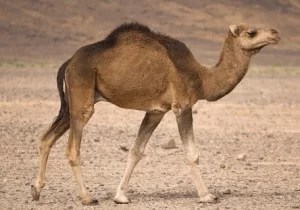Published on: March 9, 2022
CAMEL PROTECTION AND DEVELOPMENT POLICY
CAMEL PROTECTION AND DEVELOPMENT POLICY
NEWS
Camel Protection and Development Policy was announced by state government of Rajasthan in its budget 2022-23
DETAILS
WHY WAS THIS POLICY ANNOUNCED – Continuously declining camel
WHAT IS IN THE POLICY
- A budget of Rs 10 crore has also been proposed
- The amount will be used for protecting, rearing and developing the animals
WHY DID CAMEL REARING IN THE STATE DECLINE?
- Camel was declared as the state animal of Rajasthan in 2014
- Government came out with the Rajasthan Camel (Prohibition of Slaughter and Prohibition of Temporary Migration or Export Regulations) Act in 2015 to prohibit its temporary migration out of Rajasthan and stop its slaughter
- Due to this law camel rearing in the state was reduced, thus, there was a decline in their population
CAMELS
- Even-toed ungulate in the genus Camelus
- Bears distinctive fatty deposits known as “humps” on its back
- Have long been domesticated and, as livestock, they provide food (milk and meat) and textiles (fiber and felt from hair)
- Working animals especially suited to their desert habitat
- Vital means of transport for passengers and cargo
- There are three surviving species
- One-humped dromedary makes up 94% of the world’s camel population, and the two-humped Bactrian camel makes up 6%. The Wild Bactrian camel is a separate species and is now critically endangered
- One of the most important livestock for food security under climatic calamities
- Is a sustainable livestock with lowest ecological footprints and produce one of the unique food, the camel milk
- Camel milk is considered as the natural pharmacy

